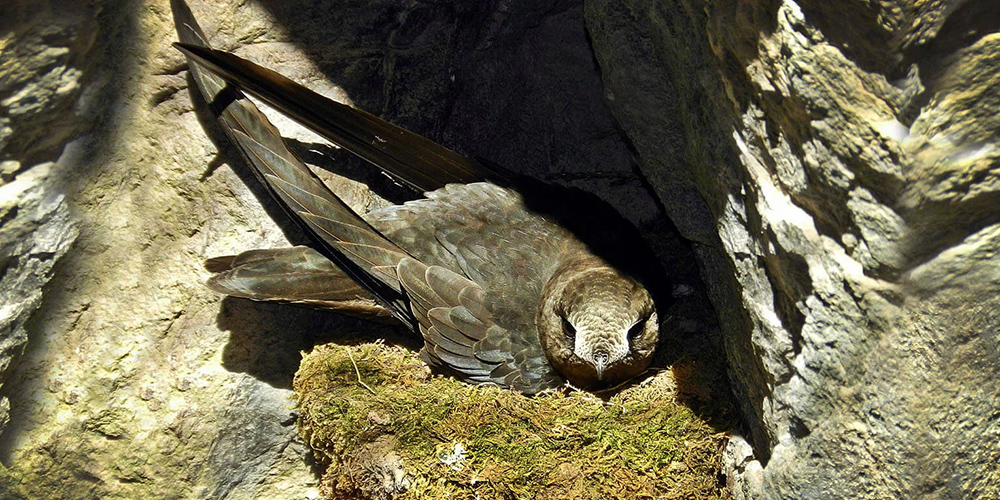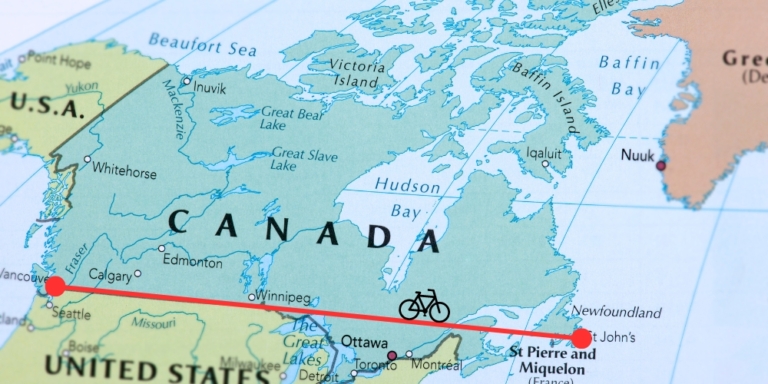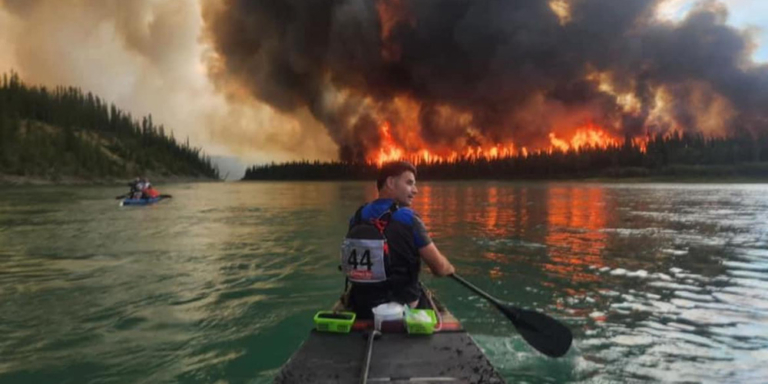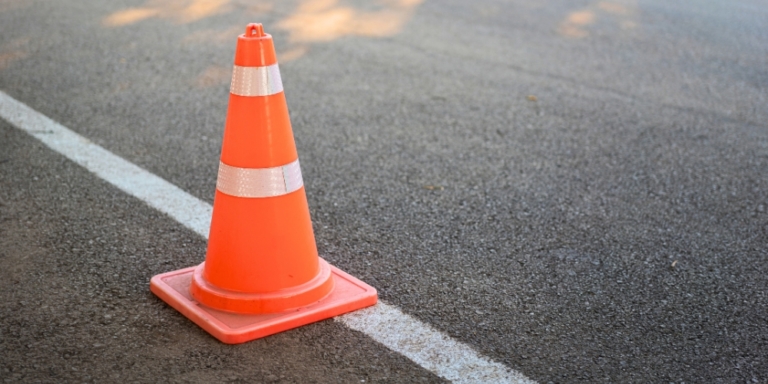The travel industry coined the term “revenge travel” to describe the trend of people eager to compensate for lost vacation time during the pandemic.
With so many people out and about, travellers have come up against huge crowds in desirable locations.
Instead of experiencing a relaxing and chill time, visitors fight traffic, line up at viewpoints, and get frustrated with sold-out accommodations and overbooked restaurants.
Now Banff and Lake Louise Tourism (BLLT) faces a promotional conundrum.
It needs to promote visitation and boost tourist revenue, but that doesn’t mean the destination marketing organization wants more crowds.
They already have enough.
Over four million people visit the region yearly, most coming in summer.
The influx of visitors causes traffic jams, parking nightmares, and swarms of people lining up for ice cream or trying to snap selfies at popular attractions like Moraine Lake, Peyto Lake, Lake Louise and Johnston Canyon.
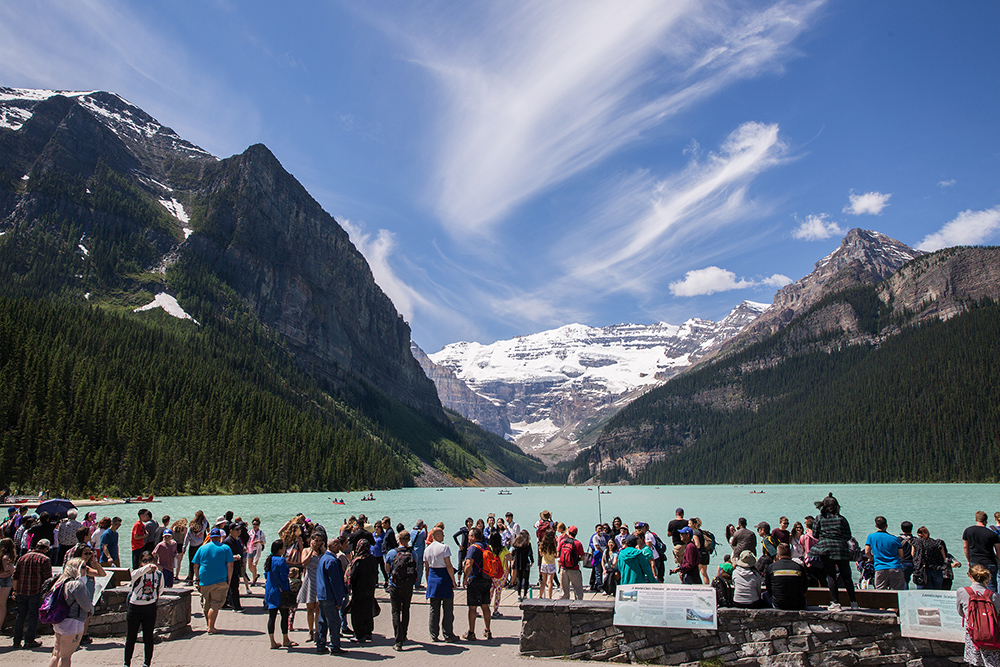

A Spread-Em Out Strategy
BLLT recently announced a three-year strategy to increase summer revenues while protecting the area’s reputation and enhancing visitor experiences.
Some of the new ideas proposed include restarting the Art In Nature Trail along the Bow River and sponsoring Indigenous-led programming to help spread out visitors to different areas of the park.
The strategy will also promote visits during the quieter shoulder seasons and winter, encouraging activities other than downhill skiing.
“I just want to be really, really clear here that this is about creating value in the destination and value for members, and this is not – and I underscore in all caps – not about driving more people to come to Banff in the summer,” said Leslie Bruce, BLLT’s President and CEO in a March 25 presentation to Banff town council.
According to Bruce, day visitors and a growing population in Calgary are driving the explosion in summertime visits especially during weekends when traffic jams are more likely to develop.
BLLT doesn’t market to local day visitors because it doesn’t have to. They’re coming either way.
That’s why, over the past several years, the organization has partnered with Parks Canada and the Town of Banff to encourage people to park their cars, take transit, a shuttle, or even ride a bike to get around in the national park.
Visitors are advised to park their vehicles in the designated visitor parking areas in Banff and then reserve a seat on Roam Transit to travel to popular destinations.
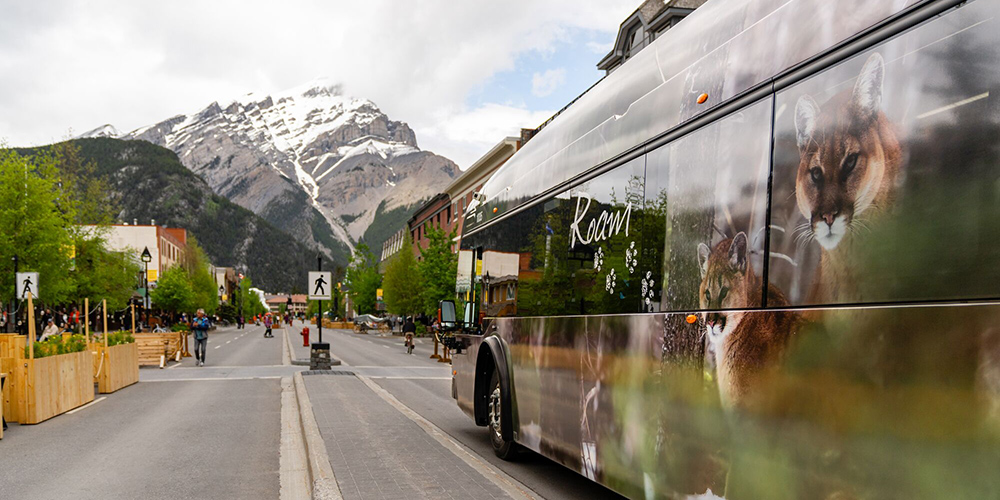

In Lake Louise, a Parks Canada shuttle transports people to the iconic but frequently crowded shores of Lake Louise and Moraine Lake.
In 2023, Parks Canada closed Moraine Lake to personal vehicles – for good. Now the only way to get there is by bus or shuttle.
All of these restrictions on personal vehicle use are aimed at avoiding a repeat of a day last August when Parks Canada and the RCMP closed access to Lake Louise because of overcrowding.
The initiative also seeks to tackle the issue of overtourism, which has been a source of frustration for local residents.
The surge in visitors overwhelms businesses during peak times, compelling them to hire extra staff during busy times and reduce staff during shoulder seasons.
Banff Mayor Corrie DiManno, a member of BLLT’s board of directors, emphasizes the importance of promoting more visits during the winter and shoulder seasons as a solution to spread out crowds and provide steady income for businesses.
“They are a huge opportunity,” she said following Bruce’s presentation to the town council.
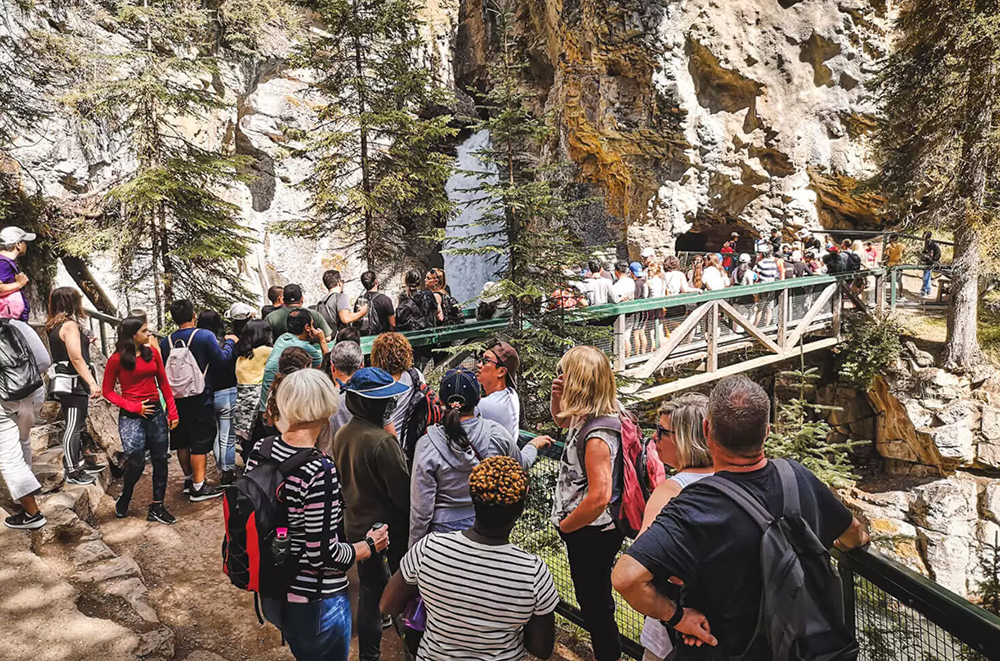

Overtourism, a Growing Problem Worldwide
In a story reported by National Geographic, the French company Murmuration, which monitors the environmental impact of tourism with satellite data, found that 80 percent of travellers visit just 10 percent of the world’s tourism destinations. And the more popular destinations just get more crowded as people share images of these destination on social media.
The United Nations World Tourism Organisation predicts that by 2030 the number of worldwide tourists will reach 1.8 billion, up from 1.5 billion in 2019.
Transportation-related carbon emissions from tourism are expected to grow 25 percent from 2016 levels.
Many communities are becoming more aware of tourism’s downsides, such as impacts on nature and air quality, housing inflation and too many people visiting the same spots.
For instance, when a photo of the so-called “secret cave” in Johnston Canyon was shared online, it quickly became popular on Instagram. The area received so much attention that Parks Canada had to close it off and begin issuing fines to trespassers to safeguard the nesting grounds of the endangered black swift in the canyon.
Traveling down Banff Avenue on a summer weekend had become as crowded as waiting in line for a Taylor Swift concert, causing frustration for both visitors and residents. In response, Banff began closing two blocks of the main street to vehicle traffic during the peak summer months.
“Even before the pandemic began, congestion has been increasingly impacting the ability of residents and visitors to access recreation features in the park,” said Laurie Edward, executive director of Banff Canmore Community Foundation
With the new three-year strategy, Banff and Lake Louise Tourism hopes to manage the fine balance between promoting tourism and maintaining a quality experience for both visitors and residents alike.
Speaking of ‘spreading out,’ Alberta has over 470 Provincial Parks and Recreation areas, so there are plenty of alternatives to the busy National Parks if you want to be alone with nature.
And if you do find a quiet, little-visited destination, ask yourself if you really need to share that special spot on social media
Take only pictures and leave only footprints… but maybe hold off on sharing once in awhile.
